Latvia is a beautiful country of only two million people. My husband Andrew (known as Roo) and I were lucky to spend two weeks exploring a bit of this tiny Baltic country and meet his family for the first time.
Young cousin Mārcis and his fiancée Sintija had already given us an introduction to the capitol, Rīga, during week one. We visited nearby towns of Sigulda, Jurmala and Bauskas for a few hours each and we were keen to spend more time in Latvia’s vast, empty countryside and small towns.
I have documented some family history and our first week in a previous post, which you’ll find here.
During week two we based ourselves in Jaunjelgava, Roo’s father’s village which is 80 kilometres from Riga. Mārcis and Sintija both grew up in Pļaviņas, a small town about 50km further along the Daugava river from Jaunjelgava.

When not meeting and dining with Mārcis and Sintija’s families in Jaunjelgava and Pļaviņas we ventured to other towns for day trips. We also spent a day and night celebrating Midsummer, or ‘Līgo’ as it is known in Latvia, with Mārcis’ grandmother Vida and her sister Vanda and family.
Rather than narrate too much, I’ll let the pictures and their captions do the talking. The photos in the following sections are a mixture of mine and Roo’s plus a few of Mārcis and Sintija’s.
Rundāle Palace
Rundāle Palace is an ostentatious 18th-century country estate built for Baron Ernst Johann Biron, lover of Anna Ioanovna, the Russian-born Duchess of Courland. The area known as Courland is both a cultural and historic region roughly comprising the modern-day Latvian region of Kurzeme. As summer houses go, it was pretty special, inside and out.




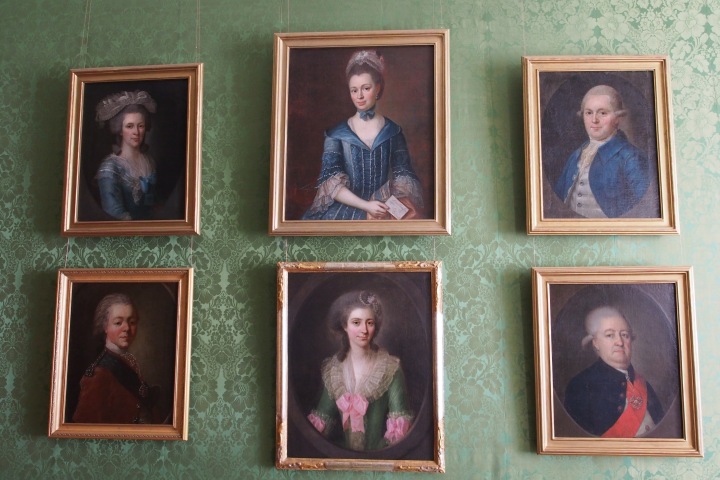





Bauska Castle
Bauska Castle is a complex of two castles at the confluence of the Mūsa and Mēmele rivers on the edge of the town of Bauska. It was built during the 14th through 16th centuries. Parts of the site are a ruin but you can climb a watchtower and gain excellent views of the surrounding countryside.
This Castle, compared with Rundāle Palace, feels more like a country hunting lodge. The decoration is austere and the walls are solid; they’re built to withstand enemy attack.













Jelgava
In the town of Jelgava there is another palace designed by the same architect as Rundāle. Jelgava Palace now houses the Latvian Agricultural University.
We didn’t visit the palace, however, in the adjoining park a costumed crowd was gathered preparing for an evening concert. We heard some warm-up performances and watched the men, women and children enjoying the Midsummer holiday.





Ušķes — The family farm
Ušķes is the name of the farm where Roo’s dad Roberts grew up, and it was also Roo’s grandmother Minna’s maiden name.
One cousin still lives on the farm. The land is not cultivated these days and there are no animals. Native forest is reclaiming much of the property.
We explored the buildings and farm equipment, some of it quite old; we admired the surrounding forest; we drank clean crisp water from the well where Roo’s dad would have drunk.
Being in the presence of objects that had belonged to Roo’s aunt and grandparents was an emotional experience for all of us. The fact that his father had never been able to return was on all of our minds. But we weren’t really sad, just grateful that we were fortunate to meet all the living family.




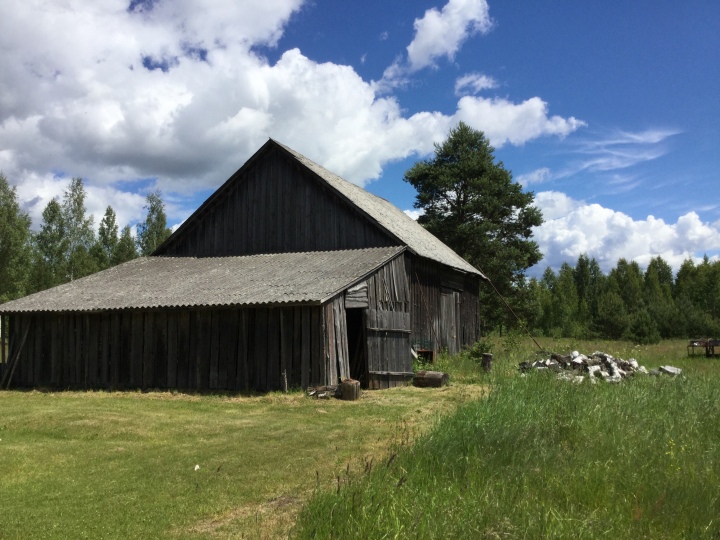






Remembering Roberts Beķers at Ušķes
As I mentioned in the previous post, Roberts never returned to Latvia after the war finished, and Roo is the first person in his family to visit since his dad left in 1944. I knew it would be an emotional visit for us all, but I didn’t expect the family to be so sensitive to Roo’s feelings. But they were. His dad died in 1984 and none of the people still living in Latvia had met Roberts. Still, the family had a strong sense of our visit as being a momentous occasion. And it was.
During our discussions with Mārcis during the months before we got to Latvia, some sort of action or ceremony or memorial for Roberts was discussed. We decided that planting an oak tree for Roberts would be a symbolic gesture. There is a very old oak tree already on the property which was planted in 1926 when aunt Vilma was born.
Sintija’s mother in Pļaviņas knew of a good plant nursery where we could find a decently-sized sapling. We arrived at the farm with the tree and some fresh potting soil. Everyone had a dig and pitched in to place the tree in the ground and water it in. We stopped to admire and each of us was lost in our own thoughts of the significance of the moment.





Family gatherings
A universal truth we have discovered: whether families are meeting for the first time or the 100th time, there is food.






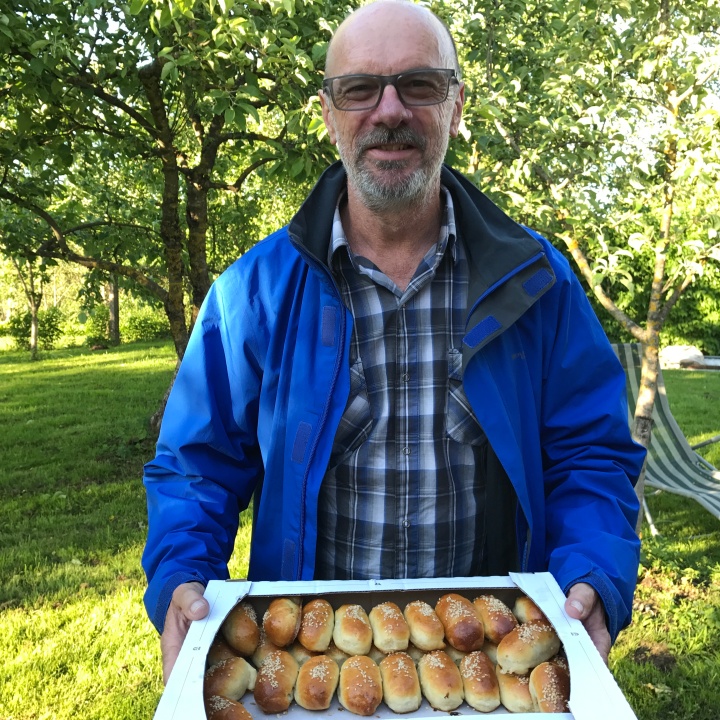
At the cemetery
We visited the peaceful Jaunjelgava Cemetery where Roo’s family members are interred.




Līgo celebrations
Latvia’s midsummer festival is known as Līgo and is celebrated on 23 June. The feast of St John the Baptist (John being ‘Jānis’ in Latvian) is the following day. These two days, the 23-24 June, make up one of the biggest Latvian celebrations — two days and a night of food, singing and dancing. Traditionally, men called Jānis, (a common name that is like the English John) wear an Oak crown. Part of the fun of the day is going into the fields to collect flowers, which are abundant in Latvia’s gentle sunshine.
Midsummer cheese (Jāņu siers) is one of the special seasonal foods served and since we liked it so much, we ate it most days. The celebration table never ran out of food.
Tradition dictates that if you wish to have good health and cheerful spirit for the following year, you should stay up all night. Even though this is the shortest night of the year, it’s a job to stay awake so the night is spent singing, eating, drinking and having a bonfire. Jumping over it is said to prevent evil spirits and illness — but only young men trying to impress someone usually have a go.
We celebrated with the families of Vida and Vanda, Mārcis’grandmother and her sister, in the countryside south of Jaunjelgava, near the Lithuanian border.







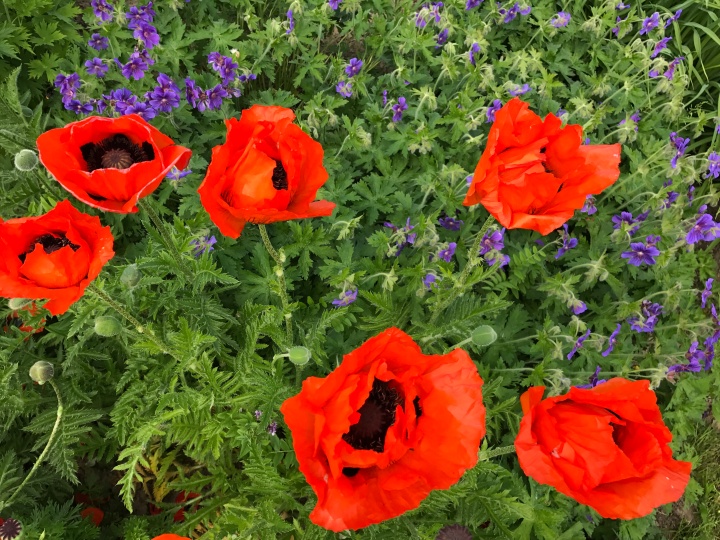





Ah, Latvia
This post covers the main places we visited but is by no means comprehensive. We made other stops along the road between places, ate in local taverns and cafes and met more people than we have told you about here.
And, this will not have been our last trip to Latvia; there is so much to explore. The warm welcome will always be with us. Having had that first wonderful experience has just whet our appetite for more.
I leave you with a few more photos. Just get out there and visit.

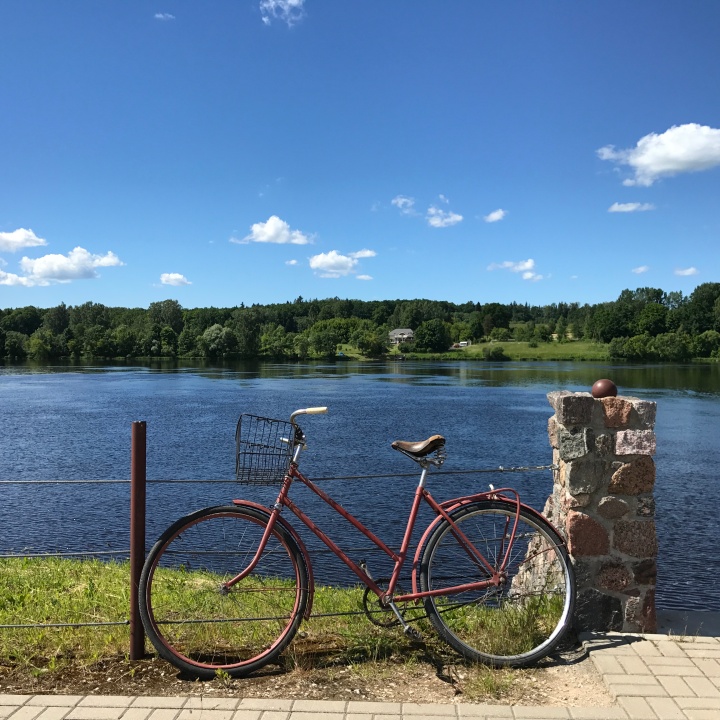



we couldn’t have made such meaningful contact with the family and known about all the foods and traditions of this Baltic gem. We are forever grateful.
This us wonderful Mary-Lou. I feel like I’ve been there with you both. What an emotional trip too. Thanks for sharing!
LikeLiked by 1 person
Thank you Lucy. The Latvians are such a wonderful and welcoming people and rightfully proud of their beautiful country. What a turbulent history they have had. The overwhelming feeling we got from the young people was of hope. They are the future.
LikeLike